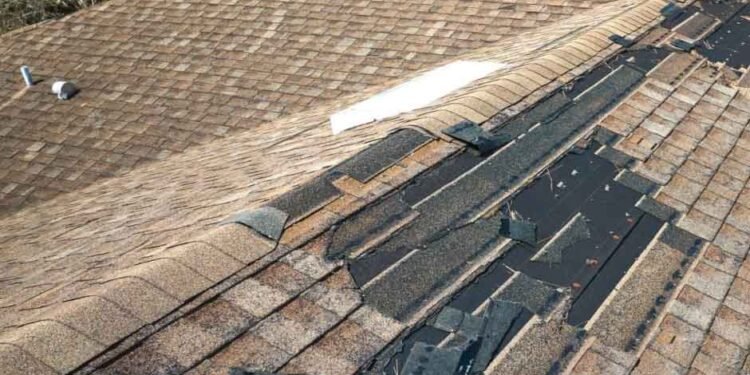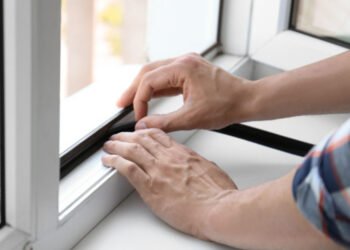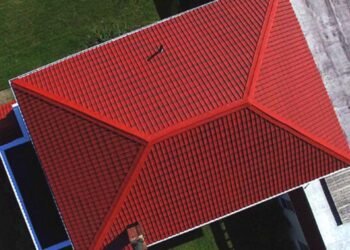When weighing your options for a new roof, wading through warranties can often be overwhelming. It’s crucial you’re clued in on the coverage scope, claim filing process, and especially the length of coverage and transferability options that could impact your home’s value in the future.
While these warranties promise peace of mind, the devil is in the details. Understanding the fine print can shield you from future frustrations.
Let’s explore how you can secure your investment and ensure your roof remains a reliable shelter for years to come, without falling into common pitfalls that homeowners often overlook.
Types of Roof Warranties
Understanding the different types of roof warranties by roofing companies is essential for protecting your home’s topmost shield against nature’s elements. Broadly, there are two main categories: manufacturer’s warranties and workmanship warranties.
Manufacturer’s warranties cover the roofing materials themselves. If the shingles or tiles you’ve chosen fail prematurely due to manufacturing defects, this warranty kicks in to cover replacements or repairs. It’s crucial to read the fine print, as the coverage can vary widely between products and manufacturers. Some offer limited warranties, only covering certain defects, while others might provide more comprehensive protection.
Workmanship warranties, on the other hand, are provided by the roofing contractors. These cover errors in installation or labor-related issues. If your roof develops problems due to improper installation, a workmanship warranty ensures that the contractor will address these issues at no extra cost to you. The duration and specifics of these warranties can differ significantly, so you’ll want to discuss this in detail with your contractor before signing anything.
Knowing the distinctions and limitations of these warranties empowers you to make informed decisions, ensuring your roof is adequately protected against both material defects and installation mishaps.
Length of Coverage
The length of coverage for roof warranties can significantly impact your home’s protection, varying widely from one policy to the next. It’s crucial to understand that the duration of these warranties can range from as little as 5 years to a lifetime. However, the term ‘lifetime’ can be misleading, as it often refers to the expected lifespan of the roof, not your actual lifetime. This distinction is vital when evaluating the long-term value and protection a warranty offers.
Typically, manufacturer warranties on roofing materials might offer longer periods of coverage, sometimes up to 50 years. In contrast, workmanship warranties provided by the contractors who install the roof tend to be shorter, often ranging from 2 to 10 years. It’s essential to note that the durability of your roof and the validity of these warranties can be significantly affected by factors such as installation quality and the roofing materials used.
When reviewing warranty options, pay close attention to the length of coverage. Longer warranties might suggest higher quality materials or greater confidence in workmanship. However, it’s also important to read the fine print and understand what’s actually covered under the warranty for the duration stated. This knowledge will help you make an informed decision that ensures the best protection for your home.
Coverage Scope
When evaluating a roof warranty’s value, it’s essential to scrutinize the coverage scope, as it determines what’s actually protected under the policy. Delve into the specifics: does the warranty cover merely the materials, or does it extend to labor and installation errors as well? Many homeowners find themselves surprised to learn that not all warranties encompass the full spectrum of potential issues, such as labor costs for repair or replacement, which can be a significant expense.
Furthermore, it’s crucial to understand the exclusions detailed in the warranty. Typically, warranties won’t cover damages resulting from improper maintenance, natural disasters, or the homeowner’s neglect. Knowing these exclusions helps you grasp the warranty’s limitations and sets realistic expectations about what scenarios are and aren’t covered.
Pay attention to the requirements for maintaining warranty coverage. Some policies mandate regular professional inspections or specific maintenance practices to keep the warranty valid. Failure to adhere to these conditions might void your coverage, leaving you unprotected against potential roofing issues.
Transferability Options
Another crucial aspect to consider in your roof warranty is its transferability options, which can significantly impact the policy’s long-term value and appeal. Transferability means you can pass the warranty on to the next homeowner if you decide to sell your property. This feature isn’t only attractive to potential buyers but can also enhance the resale value of your home.
When evaluating transferability, it’s essential to scrutinize the terms and conditions laid out in the warranty document. Some manufacturers or installers allow for a one-time transfer, while others may offer more flexible options. Be aware of any fees or deadlines associated with transferring the warranty, as these can vary widely and could affect your decision.
It’s also crucial to understand how the transfer process affects the warranty’s terms. For instance, some warranties may start anew, while others continue on the original timeline. Knowing this information will help you and any future homeowner gauge the remaining protection on the roof.
Lastly, don’t hesitate to ask for clarification from the warranty provider. Ensuring you’re fully informed about the transferability options will equip you with the knowledge to make the most out of your roof warranty, providing peace of mind for you and any subsequent owners.
Claim Filing Process
Understanding the claim filing process for your roof warranty is crucial, as you’ll need to know exactly how to navigate potential issues swiftly and effectively. Initially, you’ll want to gather all necessary documentation, including your warranty agreement and evidence of the roofing issue. This often involves taking clear, dated photos of any damage or defect.
Next, you’ll contact your roofing manufacturer or installer, depending on who the warranty is with, to report the issue. It’s important to do this promptly to avoid any complications related to timing. You’ll likely be asked to fill out a claim form, detailing the problem and providing the required documentation. Be thorough but concise in your descriptions to avoid any delays in processing.
Once your claim is submitted, there might be a waiting period for an inspection to be scheduled. The inspector will assess the damage to determine if it falls under the warranty coverage. During this time, keep all communication lines open and respond promptly to any inquiries from the warranty provider.
If your claim is approved, the warranty provider will guide you through the next steps, whether it’s repair, replacement, or compensation. It’s essential to understand what your warranty covers in terms of labor, materials, and any potential prorated costs to avoid surprises.












